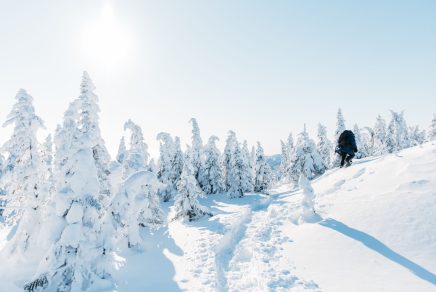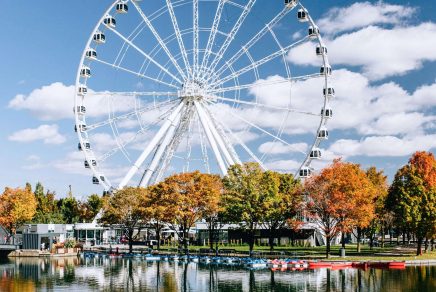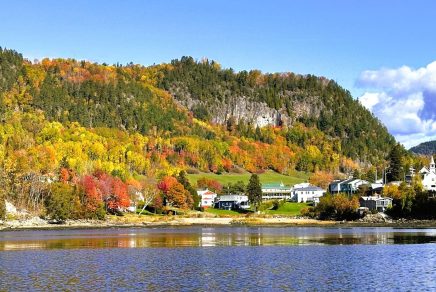Ontario is known for its abundance of beautiful natural surroundings, but our national parks in particular are especially worth setting your sights on. With only six national parks spread throughout the province, many outdoor enthusiasts turn this into a nature lover’s bucket-list of sorts, and having visited many myself, I can’t blame them.
It’s worth recognizing that many of the province’s national parks are located in the southern parts of Ontario, and a handful are within driving distance of Toronto. Bear in mind: here in Canada, we’re willing to justify that most places are driving distance! Keep in mind that what’s “reasonable driving distance” to me, may not be quite as “reasonable” to you. Do note that some of these excursions will indeed include a good chunk of driving, so you might want to add that second driver on your rental car or ensure you’ve got plenty of episodes of your favourite podcast downloaded to make the drive just a little easier.
But of course taking a road trip in Ontario is half the fun of accessing nature! These national parks are ripe for exploring, especially when it comes to the summer months. Whether you just plan on staying local to Toronto, or heading out to see some of these beautiful parks across Ontario, we have plenty of incredible options here in the province.
Let’s dive into how you can visit the national parks of Ontario while you’re here.
The national park closest to Toronto: Rouge National Urban Park
34km/34mins from Toronto
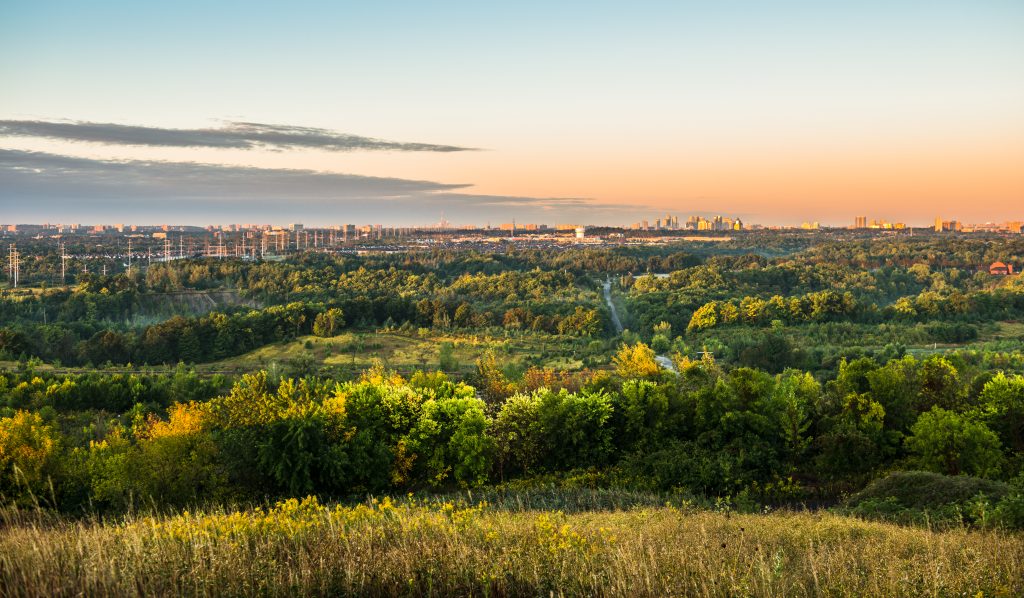
For those in Ontario’s capital, Rouge National Urban Park is the closest national park and an ideal day trip from Toronto. It’s one of North America’s largest urban parks and the first of its kind in Canada. And unlike other parks, you can access many parts of it via public transit from Toronto.
The Rouge features beautiful beaches and rivers along Lake Ontario’s shores, along with pristine, protected forests perfect for hiking and escaping the heat. I’d recommend looking into taking one of the guided hikes within the park, led by one of its knowledgeable and passionate volunteers, to better understand the area.
On top of that, if you’re really interested in diving into a true Canadian experience, you can even camp in Glen Rouge Campground during your visit, too.
The best national park for island hopping: Georgian Bay Islands National Park
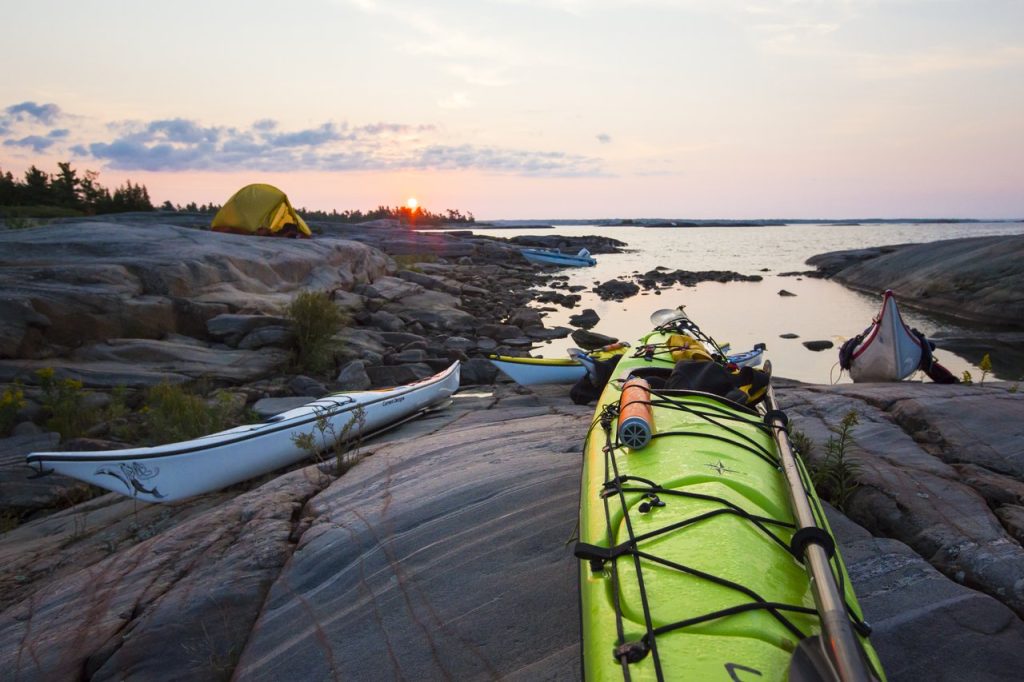
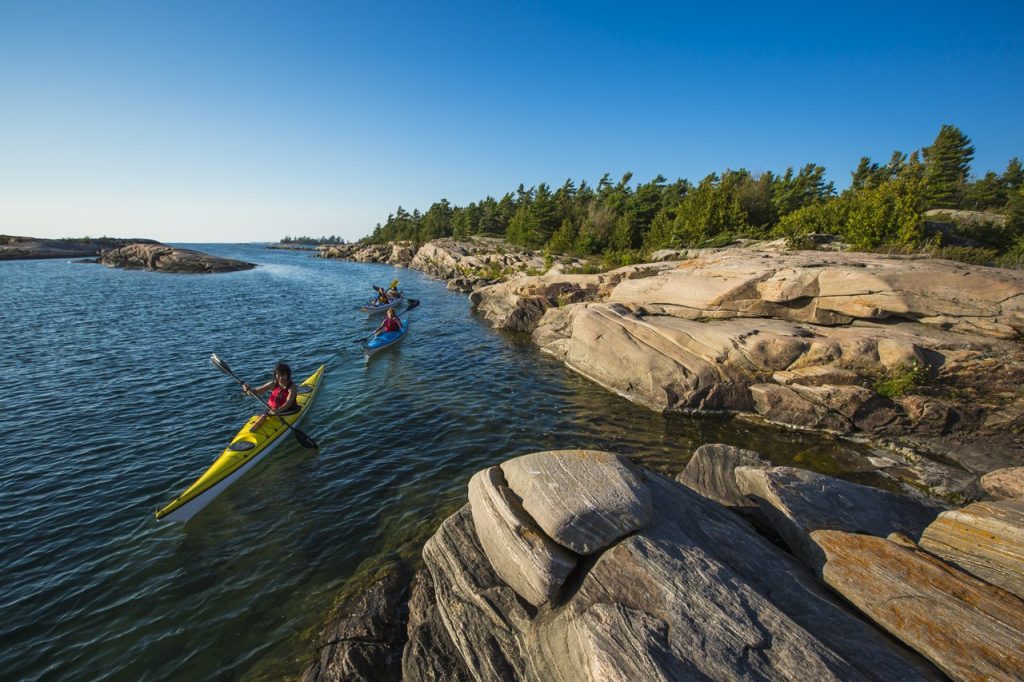
182km/2hrs, 5min from Toronto
While the Georgian Bay Islands National Park protects 50 islands and properties, the largest and most famous of which is Beausoleil Island, the archipelago is home to over 300 islands and forms the world’s largest freshwater archipelago.
Many sailors and boaters explore these islands during the summer months on their private boats, but there is excellent access to public activities like renting a bike to take on their scenic forested trails, or taking the DayTripper to Beausoleil Islands for a half day trip. You can also stay overnight in some of their beautifully secluded cabins at Christian Beach.
The national park with photogenic geological formations: Bruce Peninsula National Park
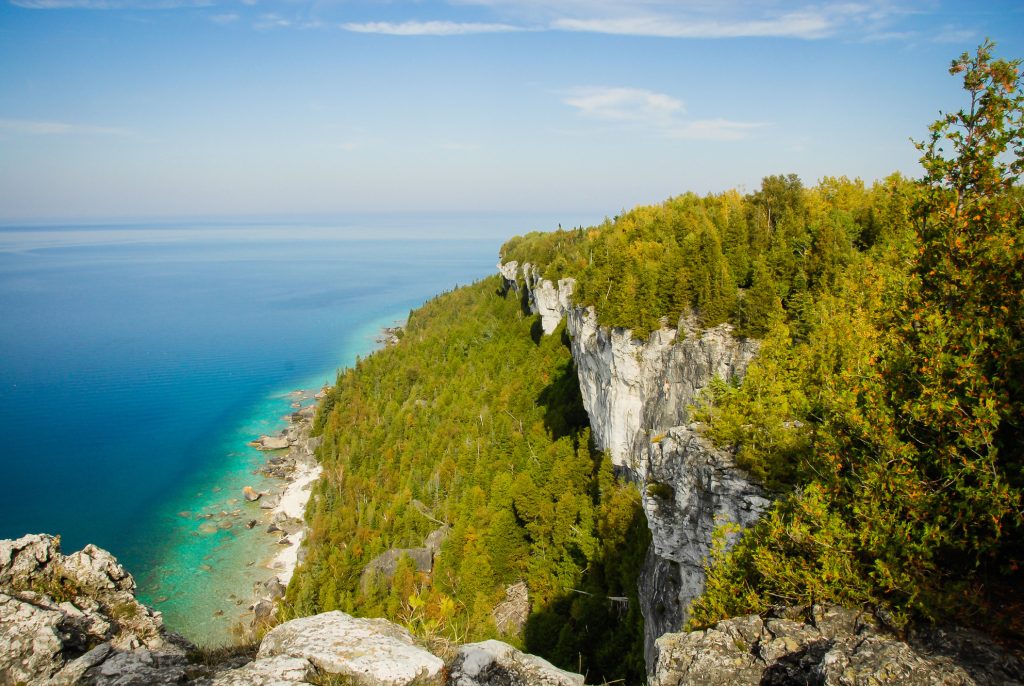
274km/3.75hrs from Toronto
The rocky and rugged coastline of Georgian Bay on Lake Huron is home to not just one, but two national parks. Bruce Peninsula National Park is a relatively short distance from Toronto, in Tobermory on the aptly-named Bruce Peninsula. Here you’ll be met with stunning bright blue vistas on the shores of Georgian Bay, famous geological formations like the rock towers of Flowerpot Island, and some of the darkest skies for stargazing in Southern Ontario.
You can plan to go camping at Cyprus Lake Campground, or stay in one of their Yurt tents, which is conveniently set up for travellers who aren’t bringing much in the way of equipment.
On your way from or back to Toronto, consider stopping at notable waterside towns, like Thornbury or Collingwood.
The best national park for cycling: Thousand Islands National Park

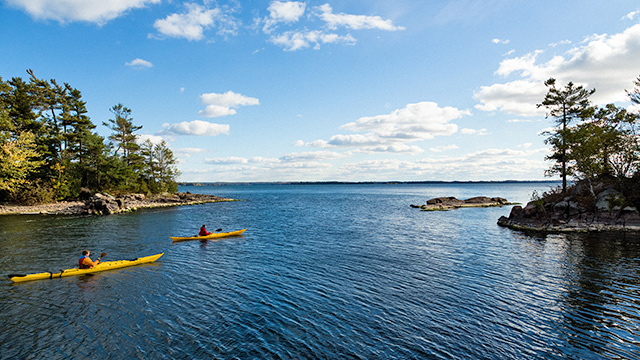
320km/3.5hrs from Toronto
This beautiful park sits on the shores of the St. Lawrence River, near the picturesque waterside town of Gananoque. Its shores, islets and inland areas are lined with pristine waterside biking and hiking trails, excellently marked picnic spots, and beautiful views of the river from historic buildings.
If you’re confident getting out on the water, I’d recommend hopping in a kayak to explore the ins and outs of the islands. There are self-guided rental opportunities, or guided experiences you can take.
Although Thousand Islands is still one of the closer National Parks to Toronto, it’s quite the drive. On your way to or from the park, consider combining your visit with an opportunity to visit Canada’s capital in Ottawa, or spend some time in the historic limestone city of Kingston.
The national park at the southernmost point of Canada: Point Pelee National Park
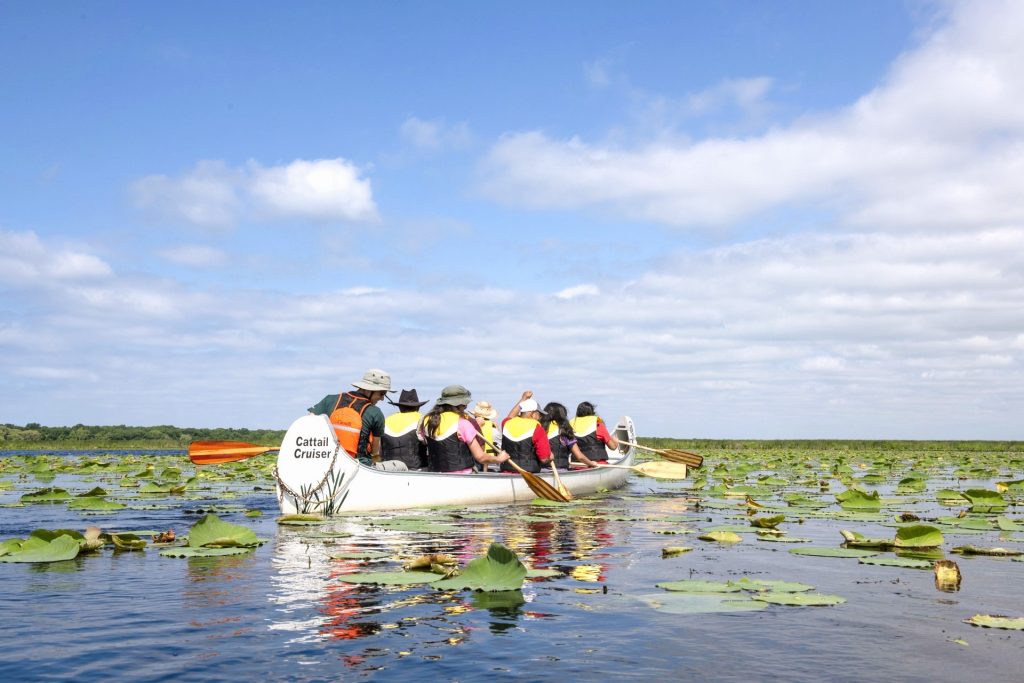
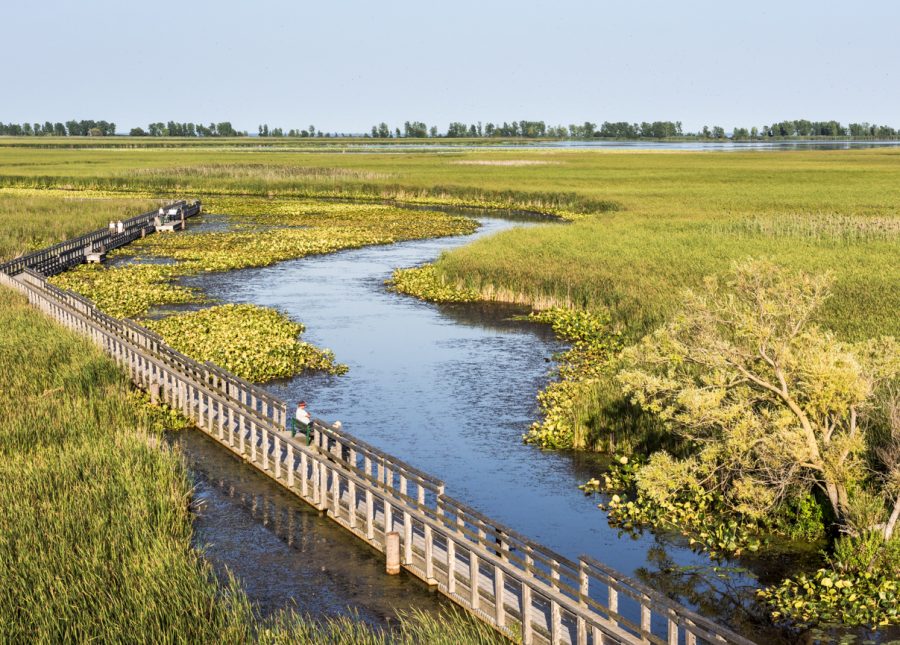
360km/4hrs from Toronto
Located on the shores of Lake Erie just outside of Leamington, Point Pelee National Park is a peninsular park brimming with scenic hiking trails, tree-covered canopies and marshy boardwalks. It’s also the smallest national park in Ontario!
My favourite thing to do is venture all the way down to the southernmost point of mainland Canada, where its pointed, sandy beach meets the competing currents of Lake Erie. It’s truly a sight to behold! The best view is from the “Tip Tower,” which gives panoramic views of the area, but do note that it was closed recently for refurbishment and improvement, though it is scheduled to be reopened this summer.
You can go camping in one of their roofed accommodations at Camp Henry, or join other travellers and take a weekend Freighter Canoe Tour. This is a great way to learn the ropes and try canoeing safely with experienced Parks Canada guides.
Once you’re in the area, I’d recommend combining your trip with a few other local points of interest. You can check out the adorable nearby town of Kingsville, and discover Ontario’s southernmost wine region, Essex Pelee Island Wine Country.
The national park for those seeking a more remote adventure in Northern Ontario: Pukaskwa National Park

1,112km/11.5hrs from Toronto
This is the furthest national park from Toronto, located in Northern Ontario. Its remote granite shoreline along Lake Superior, with its towering cliffs and several hidden sandy beaches makes it a true place to come to get away from it all.
Pukaskwa National Park is also a place where the culture of the Anishinaabe First Nations is deeply connected to this land, and that exemplified by the Anishanaabe Camp that they run here.
For canoe and hiking enthusiasts, this is considered a true hidden gem, and photographers come from far and wide to capture the essence of Lake Superior’s wildest shoreline, which stretches 135 kilometres from Hattie Cove to the Pukaskwa River.
This is also a popular destination for those into geocaching, and the golden sand of Horseshoe Beach is a major draw as well, but to me, the main attraction is the White River Suspension Bridge. Make no mistake, this is for the expert hikers as it’s an 18 kilometre day hike, but this is a seriously impressive view, and you’ll never forget what it’s like to view a roaring waterfall from up above.
It’s pristine, untouched, and the best way to, in a sense, step back in time.
Useful tips for enjoying Ontario’s national parks
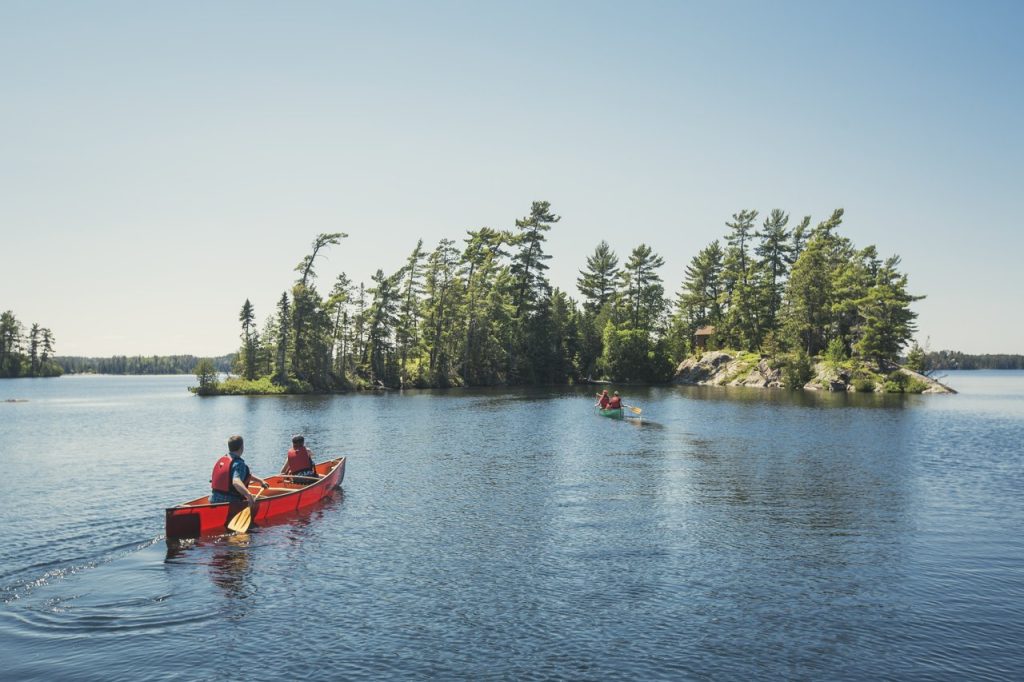
Ontario provincial parks reservations
Visits to Ontario’s best national parks do involve a little planning. Whether you’re just going for the day, or you’ve got overnight ambitions, you’ll need to make a reservation, but thankfully Ontario Parks has made that a fairly seamless experience.
What should I pack?
You’ll want to take note in particular of whether potable water is available, and if not, to plan accordingly. Bri and I often travel with Lifestraw water bottles so that we can simply dip our bottles into the lake and let the water bottle do the heavy lifting.
What about Ontario’s provincial campgrounds and campsites?
Camping in Canada is part of the postcard experience of the wilderness, wide open spaces, and dense boreal forests. Fortunately, booking campgrounds in Ontario provincial parks is straightforward and can be done online, ensuring a seamless and enjoyable adventure amidst Canada’s stunning natural landscapes. Simply search for a park, check availability for your selected dates and choose your preferred campsite, whether it’s a tent site, RV hookup, or a ready-to-camp cabin.
Many parks offer ready-to-camp cabins equipped with beds, cooking facilities, and other essentials, making it easier for international visitors to enjoy the experience without bringing their own gear.
How many national parks are in Ontario and what is the difference with provincial parks?
Ontario has six of Canada’s 48 national parks, each representing a unique natural region and ecosystem. Additionally, Ontario boasts 330 provincial parks.
The main differences between Ontario’s provincial parks and Canada’s national parks are in their geography, protected ecosystems, and activities. Ontario’s parks highlight the province’s specific landscapes, while Canada’s parks cover a wide range of regions, including the Rocky Mountains, Arctic tundra, and Atlantic coast.
